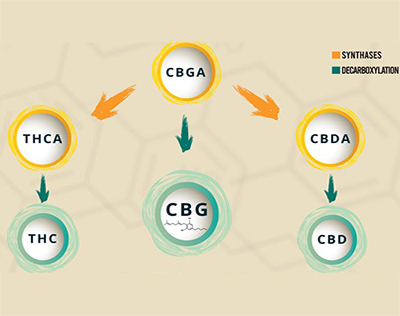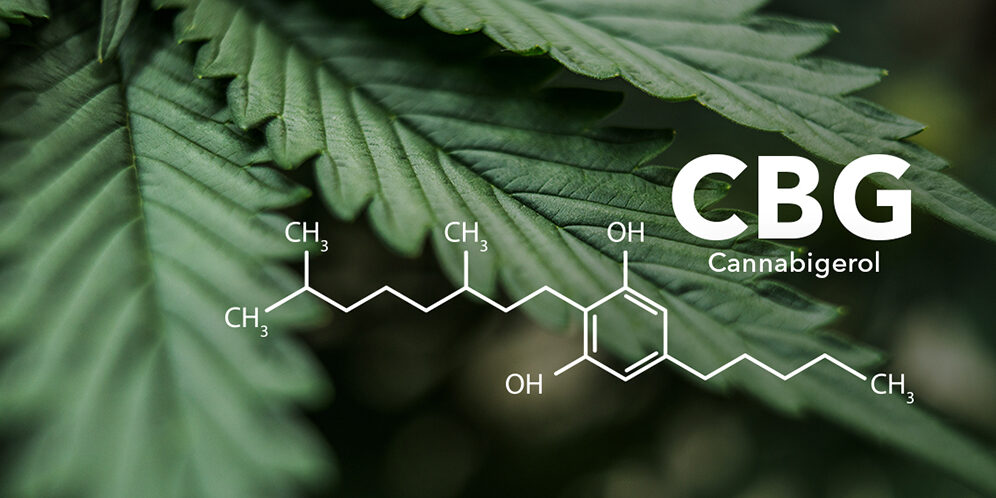What Is CBG?
How well do you know THC and CBD? If your answer is “very well,” kudos to you! Not to be a killjoy, though, CBD and THC are only a small fraction of what makes up the chemical complexity of cannabis flower. There’s still a lot more to learn when it comes to viewing the bigger picture.
If you’re eager to learn more, this article is dedicated to teaching you about cannabigerol. Commonly referred to as CBG, cannabigerol is not as popular as other cannabinoids. However, they’re important as they possess unique qualities and play essential roles in the existence of THC and CBD. Discover more about this cannabinoid below.
What is Cannabigerol?
CBG is a member of the cannabinoid family and part of the molecules that are contained in the cannabis plant’s trichomes. According to Dr. Raphael Mechoulam, a foremost cannabis scientist, CBG doesn’t produce psychotropic effects in people or latch on to CB1 brain receptors as THC does. Instead, it binds to the expanded endocannabinoid receptors with much more impressive efficacy. It’s important to note that cannabigerol is commonly referred to as “mother cannabinoid” because it is the substance from which many other cannabinoids, like CBD and THC, are formed.
CBG’s Biosynthesis
 The biosynthesis of CBG helps us understand how the chemical is formed in cannabis. Different cannabinoids in cannabis plants are formed via numerous biosynthetic pathways, and one of them begins with the cannabigerolic acid (CBGA).
The biosynthesis of CBG helps us understand how the chemical is formed in cannabis. Different cannabinoids in cannabis plants are formed via numerous biosynthetic pathways, and one of them begins with the cannabigerolic acid (CBGA).
While most of the time CBGA will transform into THCA and CBDA, sometimes it will become CBG. It is viewed as a minor cannabinoid, especially because it can be difficult to find within more developed plants. When THCA and CBDA come in contact with enough heat, they lose their “A” title, transform into their activated versions, and become THC and CBG. Although CBG typically occurs in little quantities among many cannabis varieties, researchers have been able to develop chemical varieties called chemovars that express their complete cannabinoid profile as cannabigerol.
Origins of CBG
 It has already been established that CBGA is the mother cannabinoid that produces THC and CBD. But how does CBGA come about?
It has already been established that CBGA is the mother cannabinoid that produces THC and CBD. But how does CBGA come about?
Like other plants, cannabis performs its metabolic functions with the aid of photosynthesis. They leverage the power of coenzyme acetyl-CoA to activate a complex process that results in their possession of molecules geranyl pyrophosphate (GP) and olivetolic acid (OA). These chemicals then react to form CBGA, which, in turn, forms other essential cannabinoids.
CBG and Its Uses
Many people claim that CBG is useful for many purposes, including boosting the human brain, nervous, digestive, and musculoskeletal systems.
Many state that CBG has been known to attach itself to vanilloid receptors that play vital roles in helping the central nervous system transmit pain signals. Meanwhile, research has shown that cannabigerol can interact with feel-good hormones like serotonin in the brain to improve moods. Again, research claims that CBG can help the digestive system by reducing biomarkers that are associated with certain immune dysfunctions in the gut, cramps, stomach pain, and similar conditions. Finally, this cannabinoid has been said to promote bone health.
The Future of CBG
We can know a lot about where CBG will be in the future through its close “relative,” CBD. The moment scientists started discovering the potential implications and mechanisms behind CBD was the same time it started gaining traction. Customers picked it up from there and began taking advantage of it. Today, many of them still sing the praises of CBD, and we project that CBG will follow a similar path.
However, while preliminary research shows promise, thorough human studies are still required to fully understand the potential of CBG. From oils to raw flowers, the market is saturated with cannabis and hemp-derived merchandise that contain high CBG concentrations. In the future, CBG will probably join CBD and THC in the group of respected and well-known cannabinoids.
CBG vs. CBD: Which is Better?
Making a pick between CBD and CBG is challenging as neither is superior to the other, and they have similar characteristics. For example, they both have low affinity for CB1 and CB2 and are non-psychotropic. However, they also possess unique qualities that cannabis lovers can analyze to pick the one that appeals to them the most.
While CBG maintains an interface with the expanded endocannabinoid system, CBD helps to increase the body’s endocannabinoid levels. Again, CBG is a mother to other primary cannabinoids, and its therapeutic potential has not been fully harnessed or studied. Meanwhile, there has been a lot of research surrounding CBD, and they are available in numerous product arrays, unlike CBG.
Fortunately, you don’t have to choose between them, as customers can harness the amazing qualities of both CBG and CBD together.
Wrap Up
Although CBG is still a lesser-known cannabinoid, it’s safe and doesn’t trigger psychotropic reactions like THC. While it needs expensive equipment for its extraction, we believe that cannabigerol is the next big cannabinoid to explore.

